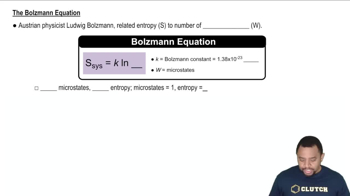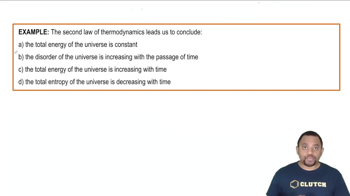Here are the essential concepts you must grasp in order to answer the question correctly.
Entropy
Entropy is a measure of the disorder or randomness in a system. In thermodynamics, it quantifies the number of ways a system can be arranged at the microscopic level, with higher entropy indicating more disorder. When a system transitions from a state of higher entropy to lower entropy, it suggests a decrease in the number of accessible microstates.
Recommended video:
Entropy in Thermodynamics
Microstates
Microstates refer to the specific configurations of a system at the molecular or atomic level that correspond to a particular macroscopic state. Each microstate represents a unique arrangement of particles, and the total number of microstates determines the entropy of the system. A decrease in entropy implies that the number of microstates available to the system has also decreased.
Recommended video:
Second Law of Thermodynamics
The Second Law of Thermodynamics states that in an isolated system, the total entropy can never decrease over time. This law implies that processes tend to move towards a state of greater disorder. However, in specific scenarios, such as the transition from state A to state B, if the entropy decreases, it may indicate that the system is interacting with its surroundings, leading to a net increase in the entropy of the universe.
Recommended video:
Second Law of Thermodynamics Example




